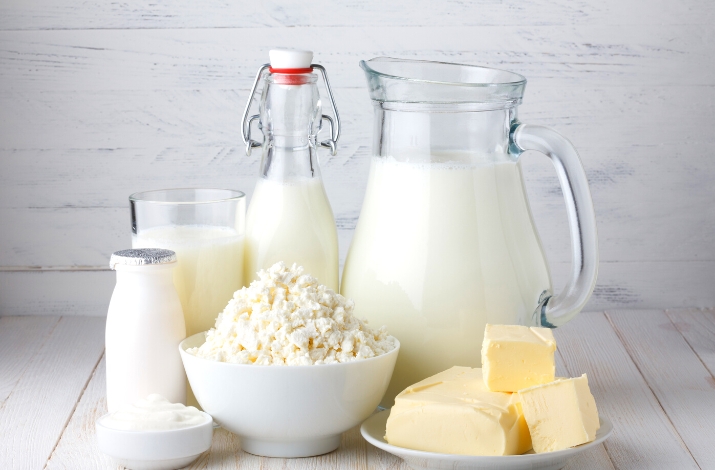Can I Have Dairy on Keto?

Cheese, butter, and eggs, oh my! The keto diet offers myriad health and wellness benefits, and all with some of the favorite foods that we missed while eating our low calorie or low fat diets. Ketogenic living involves restricting carbohydrates in favor of fat and protein in order to allow your body to enter ketosis and use its own stored fat for fuel. As a result, familiarity with nutrition labels is key to success in low carb eating, not for calories but for macros. This same nutritional savvy is also important if you’re eating dairy on a low carb diet.
Dairy is the term for foods made from the milk products of a mammal. In addition to milk, this includes such products as butter, cheese, cream, yogurt, ice cream, kefir, and more. Milk itself has all three macronutrients: fat, protein, and carbohydrates. Depending on processing, dairy products will have varying amounts of each macronutrient, but when made with whole, full-fat milk and without any additional sugar, such products will typically fit well into a keto diet, particularly in moderation.
Read on to see the different amounts of carbs in various forms of dairy.
Lowest Carb Dairy (enjoy):
Butter, ghee, heavy cream, whey, and hard and soft cheeses are all great options for low carb dieters. The number of carbs in a serving of these foods typically ranges between 0-3 g per 3.5 ounces. Full fat, plain Greek yogurt is another popular choice, although carb counts can vary significantly among different brands, so be sure to check the label.
Moderate Carb Dairy (eat in moderation):
Cottage cheese, cream cheese, sour cream, plain full-fat yogurt, kefir, and Ricotta cheese are all fairly low in carbs. You can expect about 4-8 g of carbs per 3.5 ounce serving of foods on this list. As such, you’ll want to monitor portions carefully to ensure that you don’t overdo it.
Highest Carb Dairy (avoid):
Milk of any variety, buttermilk, flavored/fruit/light/nonfat yogurt varieties, ice cream. These foods should typically be avoided or enjoyed only in small amounts. You’ll find anywhere from 12-30 g of carbs per 3.5 ounce serving of foods in this category.
It’s important to note that the lower the fat, the higher the carbs in dairy products. Anything skim, light, or low fat will almost always be much higher in carbs than the full fat variety.
Below is a visual breakdown of the carbs in different low carb, keto friendly dairy foods:

Considerations
The number of carbs per serving will show on a nutrition label, but a serving is often smaller than what a person typically eats. Cheese, in particular, is a calorie-dense food. While calories don’t matter much on a ketogenic diet, if you find that your weight loss is stalling, or worse, weight is coming back on, consider cutting back on dairy and tracking your carb intake carefully. You can sabotage your low carb diet even if you think you’re eating well. The more carbs you’re eating, the more calories will start to matter.
Some keto adherents report that dairy causes them increased cravings, yet studies suggest that dairy commonly reduces appetite and increases satiety. Others may find a worsening of their acne or other skin conditions. Dairy can contain casein and lactose in even trace amounts, so certain people may have sensitivities that prevent them from making such products a part of their diet. Because we are all unique, we will all react differently to dairy products.
Dairy is often a big (and tasty) part of a successful keto diet. With time and a little experimentation, you’ll know if it’s a good fit for your lifestyle.
References
- Onvani S, Haghighatdoost F, Surkan PJ, Azadbakht L. Dairy products, satiety and food intake: A meta-analysis of clinical trials. Clin Nutr. 2017 Apr;36(2):389-398. doi: 10.1016/j.clnu.2016.01.017. Epub 2016 Feb 13. PMID: 26923518.
- Juhl CR, Bergholdt HKM, Miller IM, Jemec GBE, Kanters JK, Ellervik C. Dairy Intake and Acne Vulgaris: A Systematic Review and Meta-Analysis of 78,529 Children, Adolescents, and Young Adults. Nutrients. 2018 Aug 9;10(8):1049. doi: 10.3390/nu10081049. PMID: 30096883; PMCID: PMC6115795.
This article is for informational and educational purposes only. It is not, nor is it intended to be substitute for professional medical advice, diagnosis, or treatment and should never be relied upon for specific medical advice.

















